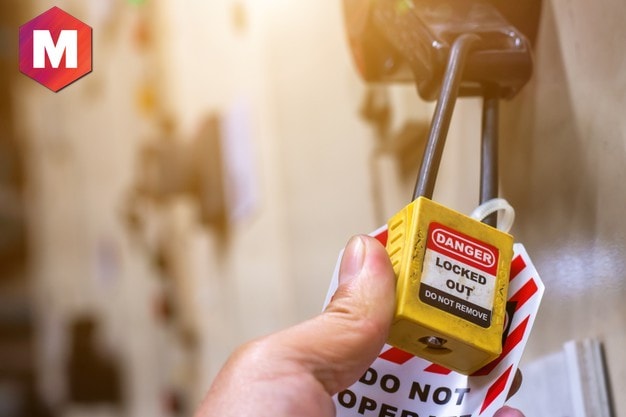
Understanding Lockout-Tagout (LOTO) Procedures: Types, Differences, and Steps

Lockout Tagout (LOTO) is a crucial safety procedure that ensures the complete shutdown of machinery and equipment until further notice It helps prevent workplace accidents and injuries, and also ensures compliance with government regulations Follow the OSHA requirements and the 8-step LOTO procedure to ensure employee safety and prevent equipment damage
The Lockout Tagout procedure is a crucial safety measure that mandates the complete shutdown of machinery and equipment until further notice. This ensures that the equipment remains inoperable until all necessary repair, service, or maintenance steps are taken. By implementing this procedure, companies prioritize workplace safety and guarantee the well-being of their employees. Commonly known as LOTO, this control program is designed to mitigate the risks posed by hazardous energy sources such as electricity, hydraulics, chemicals, water, heat, and air.
Why is it Important to follow a Lockout Tagout Procedure?
It is important to follow strict lockout tagout procedures for the following reasons
1. Employee safety
By prioritizing the well-being of their workforce, employers must ensure that their Health and Safety protocols are up to standard. The implementation of a lockout tagout program guarantees that only authorized personnel are permitted near machinery and equipment, specifically for service and maintenance purposes. This procedure also ensures that other employees maintain a safe distance from the equipment and its surrounding area, taking appropriate security measures to avoid any potential accidents or hazards.
2. Employer security
If lockout tagout procedures are not properly managed, they can result in serious harm to workers, potentially leading to accidents that result in injury or even death. In such cases, the employer is held liable for any medical expenses incurred as well as potential legal consequences, such as being punished by the law. As a result, employers must take extra precautions to prevent such incidents from occurring, as the consequences can be costly both financially and in terms of their reputation.
3. Government rules
Government regulations on workplace safety are stringent, and non-compliance can lead to hefty fines or even discontinued services. The safety management department of a company bears the responsibility of ensuring that all required safety standards and regulations, as laid down by CFR 1910.1467 (OSHA’s standard on the control of hazardous energy), are followed diligently.
What are the OSHA Lockout Tagout Requirements?
Companies are required to comply with OSHA regulations for energy control programs, which outline specific guidelines for dealing with hazardous energy such as electricity, gas, and pressure. Before any service or maintenance is performed, the employer is responsible for informing all parties involved that a lockout tagout program is in effect. This program includes procedures for removing energy sources from equipment, as outlined by OSHA requirements.
The safety management department has a crucial responsibility to ensure that all equipment is fitted with the necessary devices and that no energy remains, which could result in unexpected activation. To comply with OSHA regulations, employers must provide regular training to the safety management team, enabling them to enhance their skills and stay up-to-date with the latest energy control procedures. This approach guarantees that the lockout tagout program is implemented effectively.
If a company chooses to rely solely on tags instead of lockout procedures, it is crucial for management to implement additional measures to ensure the safety of employees. OSHA protocols mandate the use of specific practices and procedures to prevent accidental injuries or fatalities when utilizing tagout devices. This is essential for protecting workers from unexpected releases of hazardous energy within the organization.
What are the Steps of Lockout Tagout Procedures?
The basic steps in the lockout tagout procedures are as follows-
1. Prepare for the shutdown
To effectively implement a lockout tagout program, the initial step is to prepare for equipment shutdown. This involves identifying the machine that requires servicing, assessing the energy sources linked to the machinery, and determining the specific steps for shutting down the machine in a systematic manner. It is crucial to handle the process with care, therefore, it is essential to ensure that the authorized service and maintenance team is aware of the energy sources and properly trained in the hazardous energy control program.
2. Notify affected employees
During this crucial step, it is imperative to notify all workers who have access to the area about the upcoming service or maintenance activities. It is important to inform affected employees as early as possible about the duration of the restricted area and the schedule for the service or maintenance activities. This will ensure that all necessary precautions are taken and that work can resume in a timely manner.
3. Shut down the equipment
Proper execution of the lockout tagout procedures entails shutting down the equipment while adhering to strict safety standards. Only authorized individuals should handle the machine and secure the system with a tag device and lock device in the appropriate sequence on the equipment to regulate hazardous energy.
4. Isolation of energy source
During this stage of the LOTO program, it is crucial to follow safety management protocols to ensure the proper isolation of all energy sources. Any oversight in this process could have disastrous consequences for everyone involved. It is imperative to verify that every energy source is successfully isolated before proceeding.
5. Apply LOTO devices to energy sources
During this stage, the service and maintenance team ensures that energy control measures are in place and a proper lockout has been performed. Authorized personnel utilize LOTO devices such as lock and tag devices to prevent equipment from being energized. In some cases, multiple devices are necessary to ensure energy control and proper lockout.
6. Release/control all stored energy
The piece of equipment might have residual energy. This is the time to release all the stored energy as a safety precaution.
7. Verify the lockout
Although the authorized team has taken all necessary precautions and ensured the lockout tagout program, workplace safety should never be taken for granted. It is crucial to double-check and verify the lock to prevent any potential harm. With various types of hazardous energy present, it is imperative to ensure that the authorized team has complete control of the process.
8. Bring the equipment back on the line
After completing the maintenance work, it is crucial to proceed with extreme caution while removing all the tools and Tagout device. The equipment must be brought back on the line following the correct order of the procedure, step-by-step.
Regularly updating and following lockout tagout procedures is crucial to ensure safety. Any alteration in the operating process, no matter how small, can have fatal consequences. Therefore, it is imperative that authorized personnel are kept informed and up-to-date on all changes related to lockout tagout procedures.
What is the difference between Lockout Tagout?
In other words, lockout physically prevents the machine from being used while tagout simply serves as a warning sign. Lockout devices are typically used when there is a high risk of injury or death, while tagout devices are used in less hazardous situations. Both lockout and tagout procedures are important for maintaining workplace safety and preventing accidents.
As per OSHO regulations lockout is a safer and more effective device than just using the tagout device because lockout will provide physical locks that cannot be taken off without a key.








